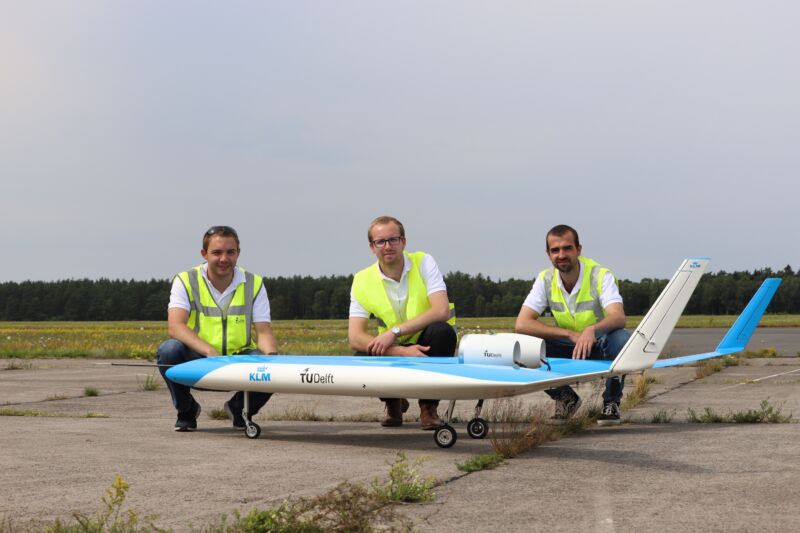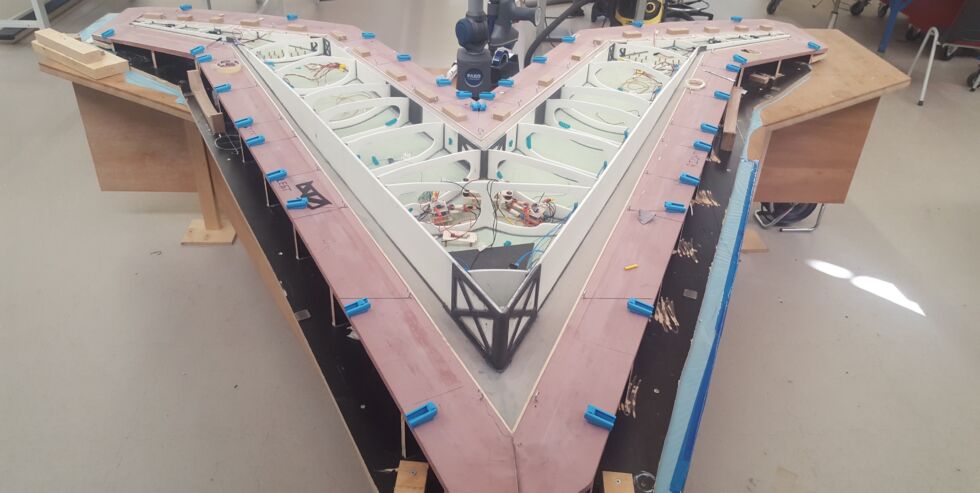the future is v shaped —
The plane, designed in the Netherlands, was affected by Dutch roll.
Jonathan M. Gitlin
–

Enlarge / Members of the flight test team pose with the Flying-V model in Germany in June 2020.
Malcolm Brown/TU Delft
When it comes to new airplanes, the airline industry rarely strays outside its comfort zone. “A cigar-shaped fuselage atop a pair of wings, with three stabilizers at the back” describes pretty much every airliner in service today. Convergent evolution means there aren’t even very many double-deckers left, and most planes carry their engines under the wings. Which is why the Flying-V is such a breath of fresh air.
We looked at this weird-looking concept a couple of times in 2019. Originally, it was the brainchild of a graduate student at the Technical University of Berlin, then working on his thesis at Airbus. A year later, it attracted the attention of a research group at TU Delft in the Netherlands, which has worked with Dutch airline KLM to develop the idea as a celebration of the airline’s centenary.
Instead of a conventional airliner design, the Flying-V is just a pair of fat wings joined in a V. Passengers would sit toward the front, along the leading edges, with cargo space closer to the wingtips. The jet engines are above the wings, located at the back of each wing opposite a small vertical fin. A full-size Flying-V would have the same width as an Airbus A350—keeping things simple for airports—but would use 20 percent less fuel.
It’s still far too early to call the Flying-V the future of air travel, but earlier this summer, the team at TU Delft did give the concept its maiden flight. The prototype is obviously a little smaller than full-size, measuring 9-feet (2.76m) long with a 10-foot (3.06m) wingspan. Built from composites and mostly done in-house at the university, it’s powered by a pair of 4kW electric ducted fan motors connected to a lithium-polymer battery weighing 13.2lbs (6kg).

Enlarge / The Flying-V model under construction at TU Delft.
Malcolm Brown
Managing the prototype’s weight was one of the biggest challenges—the finished article had to weigh less than 55.1lbs (25kg) to comply with European drone regulations—but the working model tipped the scales at 49.6lbs (22.5kg) when it took to the skies in Germany earlier in July.
“One of our worries was that the aircraft might have some difficulty lifting off, since previous calculations had shown that ‘rotation’ could be an issue. The team optimized the scaled flight model to prevent the issue, but the proof of the pudding is in the eating. You need to fly to know for sure,” said Dr Roelof Vos, professor of flight performance and propulsion at TU Delft and leader of the Flying-V project.
As it turned out, the Flying-V rotated easily at 50mph (80km/h). The pair of ducted fans gave it good thrust, and flight speeds and angles were as predicted by the wind tunnel and simulator. However, Vos’ group did find that the Flying-V is susceptible to an unwanted yaw motion (ironically) called Dutch roll that caused a bit of a rough landing. This was also predicted in simulation, and the data gathered from the initial flight test will be used to refine the model for future tests that should result in smoother landings.

